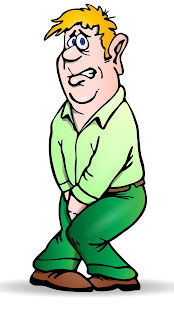Urine Incontinence
CLASSIFICATIONAccording to Brunner & Suddart:
Stress Incontinence
It is the involuntary elimination of urine through the urethra as a result of a sudden increase in intra-abdominal pressure. This type of incontinence is most common in women and can be caused by obstetric injuries, bladder column lesions, extrinsic pelvic abnormalities, fistulas, detrusor dysfunction and a number of other conditions. In addition, this disorder can occur due to congenital abnormalities (exstrophy of the bladder, ectopic ureter).
Urgency Incontinence
Occurs when the patient feels the urge or urge to urinate but is unable to hold it in long enough before reaching the toilet. In many cases, uninhibited bladder contractions are a concomitant factor; This condition can occur in patients with neurological dysfunction that interferes with inhibition of bladder contractions or in patients with symptoms of local irritation due to urinary tract infections or bladder tumors.
Overflow Incontinence
Characterized by frequent and sometimes almost continuous elimination of urine from the bladder. The bladder cannot empty its contents normally and is excessively distended. Although the elimination of urine occurs frequently, the bladder is never empty. Overflow incontinence can be caused by neurological disorders (ie, spinal cord lesions) or by factors that block the urinary outlet (ie, drug use, tumors, prostatic structures and hyperplasia).
Functional Incontinence
Incontinence with intact lower urinary tract function but other factors, such as severe cognitive impairment that makes it difficult to identify the need to urinate (eg Alzheimer's dementia) or physical impairment that makes it difficult or impossible for the patient to reach the toilet to urinate.
Reflex Incontinence
It is the involuntary loss of urine when a certain volume has been reached, occurring at predictable intervals. Neurologic disorders such as spinal cord lesions. (Barbara C. Long. 1996)
ETIOLOGY
1. Cerebral clouding: It is a cerebral control disorder in the form of mental status characterized by confusion, decreased perception, lack of attention and results in disorientation to time, place, and others.
2. Infection
3. Disturbance of pathways from the central nervous (cortical lesions)
4. Upper neuronal lesion
5. Lower motor neuron lesions
6. Tissue damage
CLINICAL MANIFESTATIONS
1. Stress incontinence: Urinary discharge during coughing, straining, and so on. These symptoms are very specific for stress incontinence.
2. Urgency incontinence: the inability to hold the urine out with a picture of frequent rush to urinate.
3. Nocturnal enuresis: 10% of children aged 5 years and 5% of children aged 10 years wet during sleep. Bedwetting in older children is abnormal and indicates an unstable bladder.
4. Symptoms of urinary infection (frequency, dysuria, nocturia), obstruction (weak stream, dripping), trauma (including surgery, eg abdominoperineal resection), fistula (continuous dripping), neurological disease (sexual or bowel dysfunction) or systemic disease (eg diabetes) may indicate an underlying disease.
5. Discomfort in the pubic area.
6. Urinary bladder distension.
7. Inability to urinate.
8. Frequent urination, when the bladder contains a small amount of urine (20-50 ml).
9. Imbalance of the amount of urine excreted with the intake.
10. Increases anxiety and urge to urinate.
11. The presence of as much as 3000-4000 ml of urine in the bladder.
12. Do not feel urine come out.
13. Bladder feels full even after urinating.
Nursing Diagnosis and Interventions
Nursing Diagnosis 1 :
Impaired urinary elimination related to sensory-motor disturbances
Expected result:
- Empty bladder completely.
- No urine residue >100-200 cc.
- Fluid intake within the normal range.
- Balance fluid balance.
Nursing Interventions :
- Perform a comprehensive urinary assessment focusing on incontinence (eg, urine output, voiding pattern, cognitive function)
- Monitor use of drugs with anticholinergic properties
- Monitor intake and output
- Monitor the degree of bladder distension by palpation or percussion
- Help with the toilet regularly
- Catheterization
Nursing Diagnosis 2 :
Disturbed body image related to loss of body function, changes in social involvement.
Expected results:
- Positive body image
- Able to identify personal strengths
- Describe factually changes in body function
- Maintaining social interaction
Nursing Interventions :
- Assess verbally and non-verbally the client's response to his body
- Explain about the treatment and care of the disease
- Identify the meaning of reduction through the use of tools.
- Facilitate contact with other individuals in other groups
Nursing Diagnosis 3 :
Anxiety related to changes in health status.
Expected results :
- The client is able to identify and express anxious symptoms.
- Identify, disclose and demonstrate techniques for controlling anxiety.
- Posture, facial expressions, body language and activity levels show reduced anxiety.
Nursing Interventions :
- Use a calming approach.
- Explain all procedures and how the client felt during the procedure.
- Understand the client's perspective on stressful situations.
- Accompany the patient to provide security and reduce fear.
- Encourage the family to accompany the patient.
